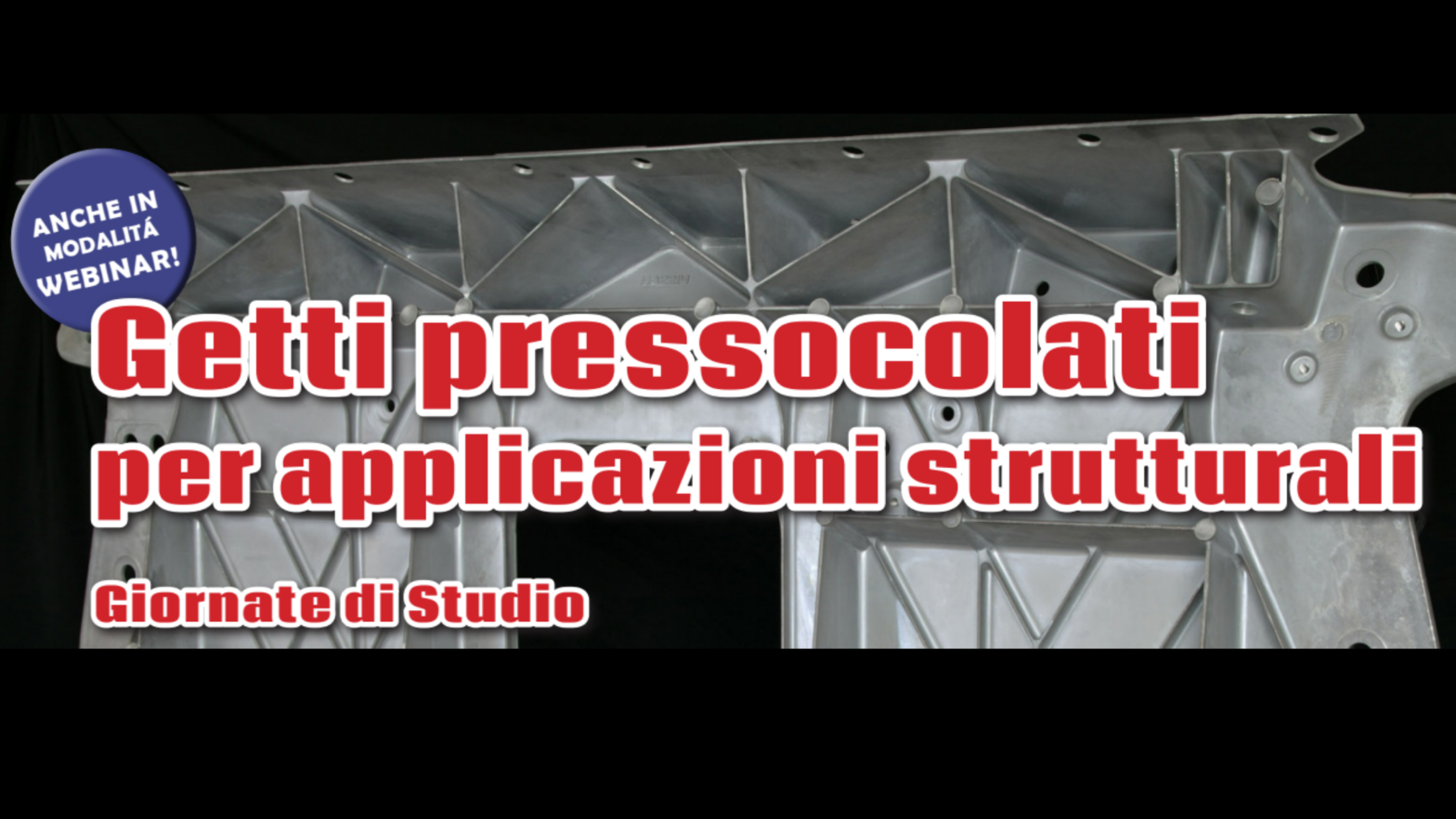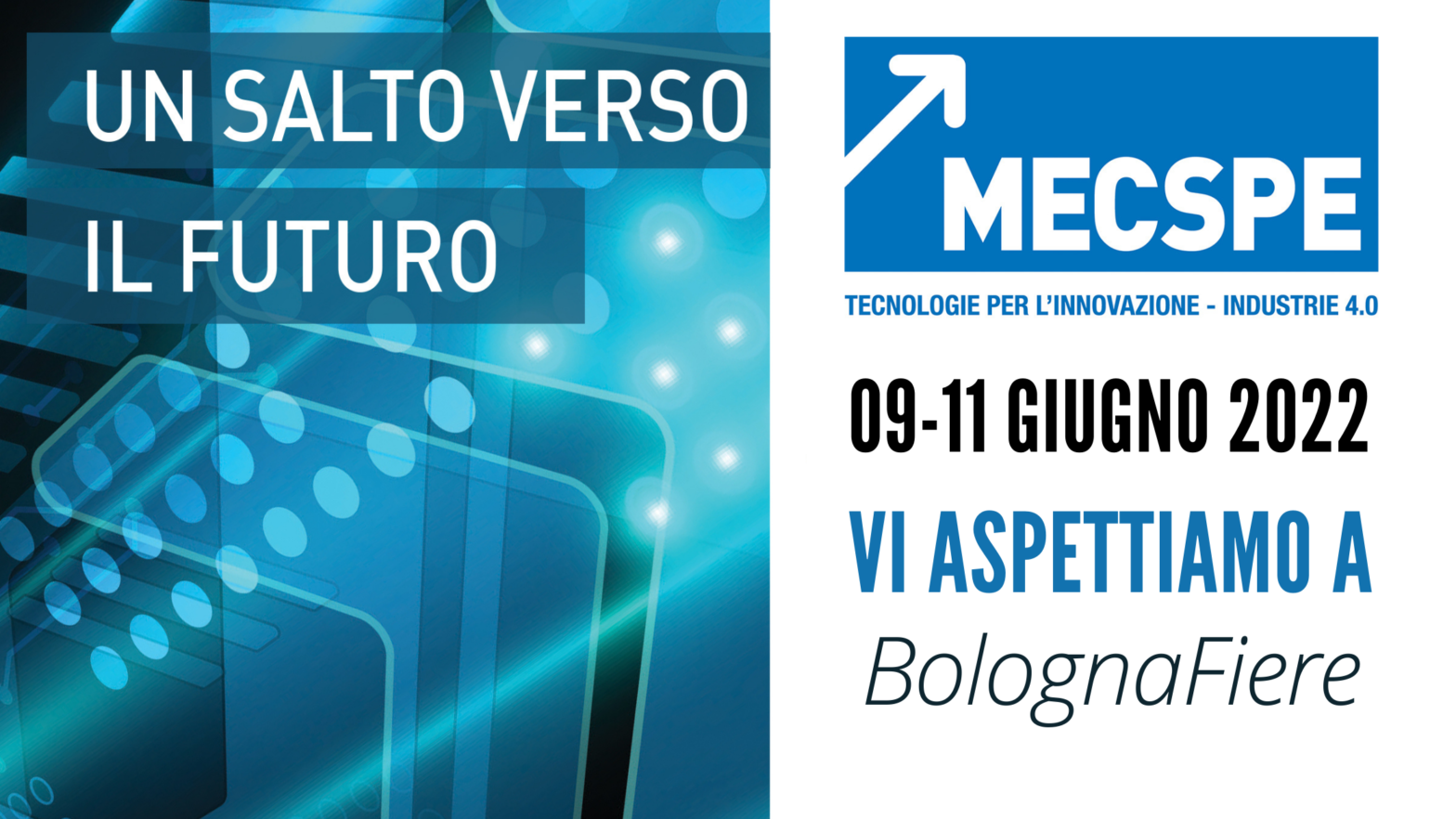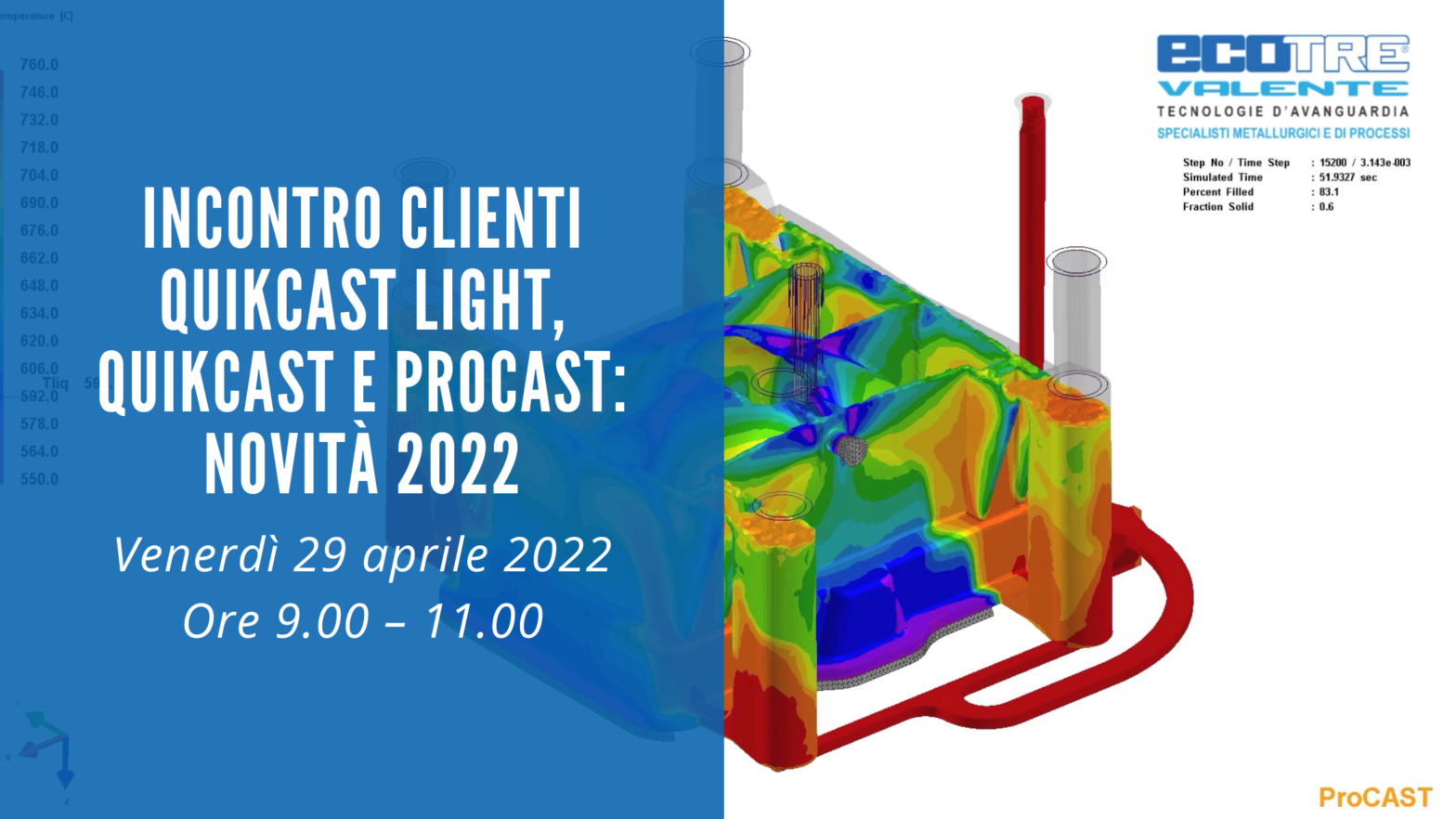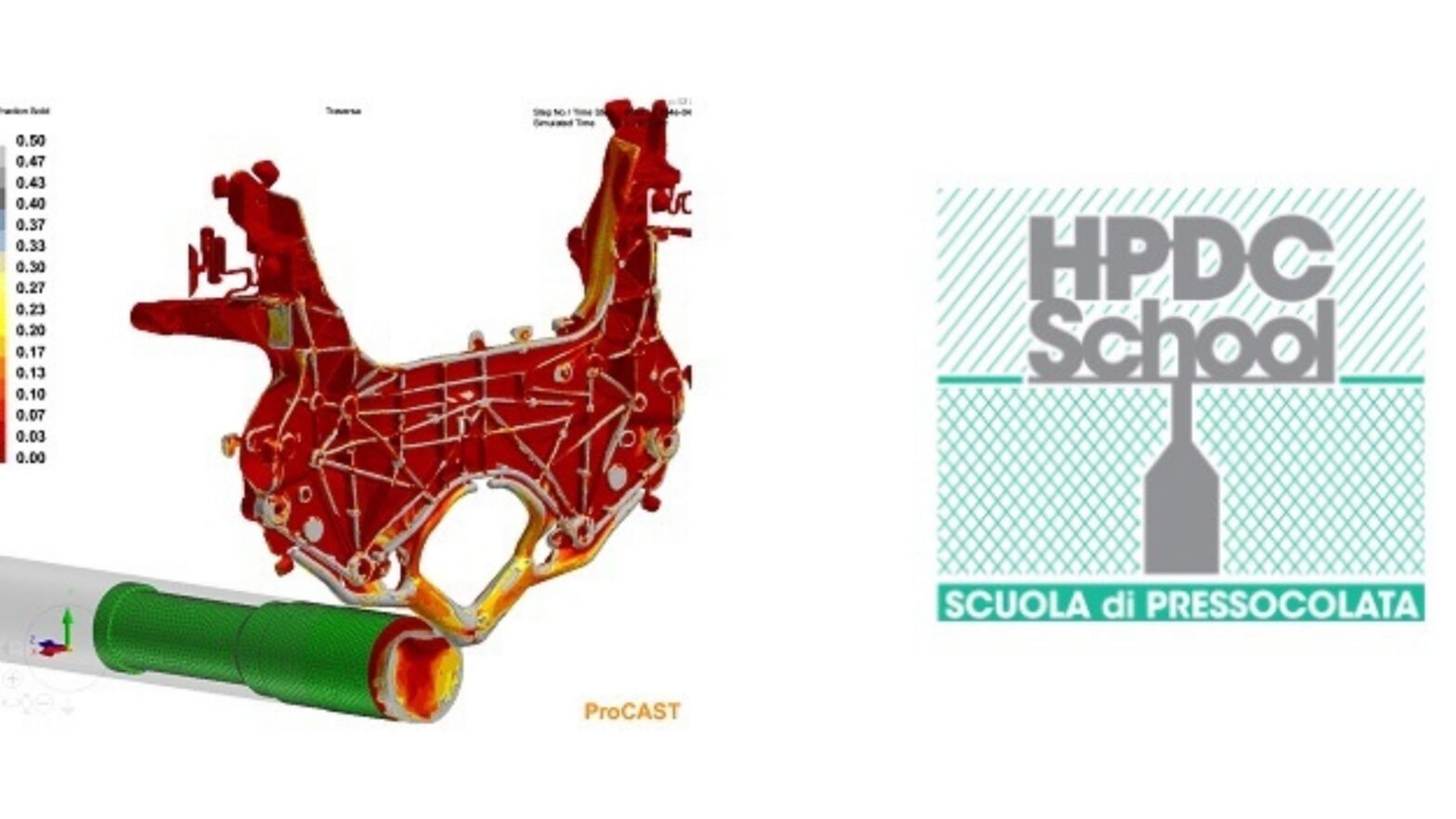QuikCAST and ProCAST Software Benefit
- Quality improvement
- Optimization and saving in the design
- Improvement of production
- Enhanced precision
- Flexibility of use
- Reduction of calculation times
- Reduction of production rejects
- Saves money
Vacuum High Pressure Die Casting: What it is
During the die casting process, the air present and the gases produced are hard to exhaust completely. This leads to producing pieces with porosity and therefore less mechanical strength. Thanks to vacuum systems, the pressure inside the form can be reduced so as to extract air and gas and to improve filling of the pieces.
Vacuum High Pressure Die Casting Simulation: How it works
The complete simulation shows the forced evacuation of gases with the vacuum system and intake unit both Chill-block and valve. During filling there are two fluids in competition, the incoming alloy and the outgoing air. The problem arises when the alloy encapsulates air. QuikCAST and ProCAST software can be interfaced with the latest vacuum technologies, and can therefore control the evacuation curves of gases in phase with the injection curve.
The calculations of air backpressure together with adequate pressure conditions defined by the user make it possible to simulate vacuum melting processes.
Thanks to the QuikCAST and ProCAST vacuum high pressure die casting simulation software programs, the best possible conditions can be met to obtain a healthy and virtually flawless product. The software has a very nice and easy-to-use graphical interface, requiring little effort from personnel: the program guides the user step-by-step in importing geometries, selecting materials and setting process parameters.
Just one thermodynamic calculator of the materials database allows the user to directly enter the chemical composition of the alloy and to automatically predict the properties depending on the temperature necessary to precisely simulate the casting process.
During simulation of solidification, the evolution of the solid part is calculated and used to predict shrinkage positions.
The vacuum process, the porosity of the gas due to non-dissolved hydrogen, stresses in casting, the stress released in the removal of the die and from the ejection of the part and the life of the die itself can all be predicted so as to reduce costs of production and performance of the part in use.
For the purchase, hire or a DEMO of the software or if you want to take advantage of a simulation service specially-made by our technical department, write or call us at +39 030 3365383
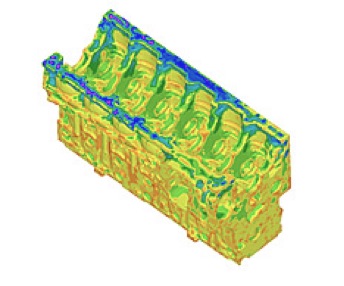
ELONGATION
The software can provide the elongation % map
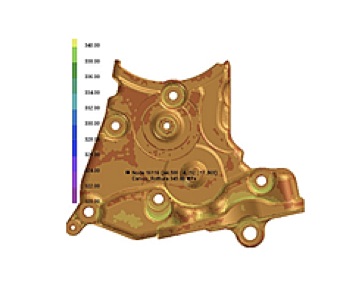
ULTIMATE TENSILE STRENGTH
The simulator provides the map of the Ultimate Tensile Strength of the Component “As Cast” and after Heat Treatment

YIELD STRESS
The simulator provides the map of the Yield Stress of the Unfinished Component and after Heat Treatment

HARDNESS
The simulation can indicate the Hardness that can be obtained and its profile through its thickness

SDAS
The casting simulator shows the map of the SDAS (Secondary Dendrite Arm Spacing), a useful indicator of component performance

GAS POROSITY
Map of Porosity from Gas encapsulated during filling. Reduction of mechanical and bonding performance of the component

OXIDES
The alloy oxidizes during filling and the simulation points out where the oxides hide and where they move during filling

DELAMINATIONS
The simulator shows the delaminations, related to imperfect bonding of the alloy during filling

INCOMPLETENESS
Incomplete pieces or with joinings and retrieved lines
Undersized gating system or incorrect gas exhaust

SHRINKAGE POROSITY
Map of Shrinkage Porosity.
Geography and Dimension of defect in mm3.

CRACKS
Map of hot and cold cracks on casting

DIMENSIONAL
Dimensions and deformations of piece during solidification, extraction, cooling, blanking and any heat treatment

CO-DESIGN
Eliminate defects by acting on the causes and not on the effects

ALLOYS
Impact of the alloy on the mechanical features and on the defects

CHEMICAL ANALYSIS
QuikCAST Light, QuikCAST and ProCAST characterise the alloy initiating from the chemical analysis. Assessment, for example, of the consequences of the addition of 200 ppm of Strontium
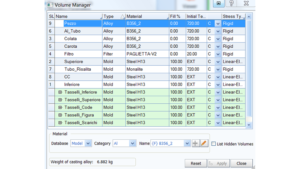
DATABASE
Complete archive of mould steels, sands, cores, insulation and exothermic sleeves, chillers, shells

DESCRIPTION
The simulation allows you to set a preview of the ideal process parameters for production of the component. This way the actual sampling underwent a positive result by eliminating fine tunings for the correct set of process parameters. Furthermore, the Optimizer Module of the software automatically defines the minimum and maximum ranges of the parameters guaranteeing the consistency and stability of the process.

DIE
The casting simulation shows the thermal die cycling simulation, the conditioning or thermal circuits, lubrication, deformation and die duration

PLATE
Optimization of the plate, positioning of the chillers, sleeves, filters and die assembly of the cores. Maximum yield.

CASTING MACHINE
The casting simulation allows you to know the required casting machine and therefore the tonnes necessary

SYSTEM
Simulation of the entire injection cycle, complete with container, riser tube, tipping, automatic, manual system
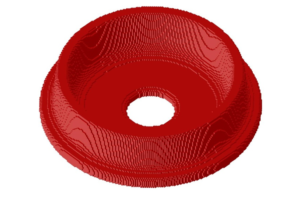
FINITE VOLUMES
The finite volumes or Finite Differences Technology is the introductory technology to casting simulation.
QuikCAST

FINITE ELEMENTS
The Finite Elements Technology is the top technology that provides the maximum performance of the casting simulator.
ProCAST












